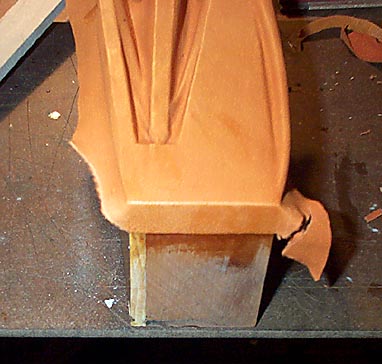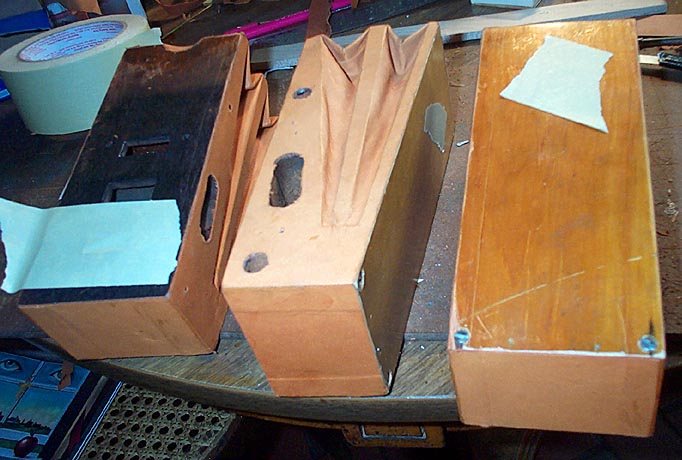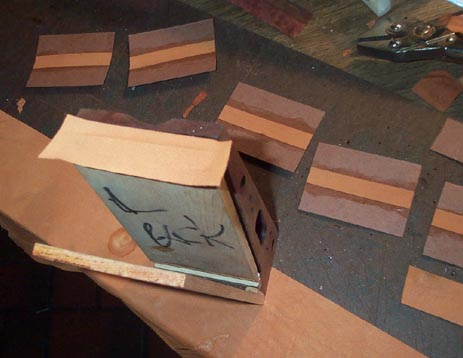
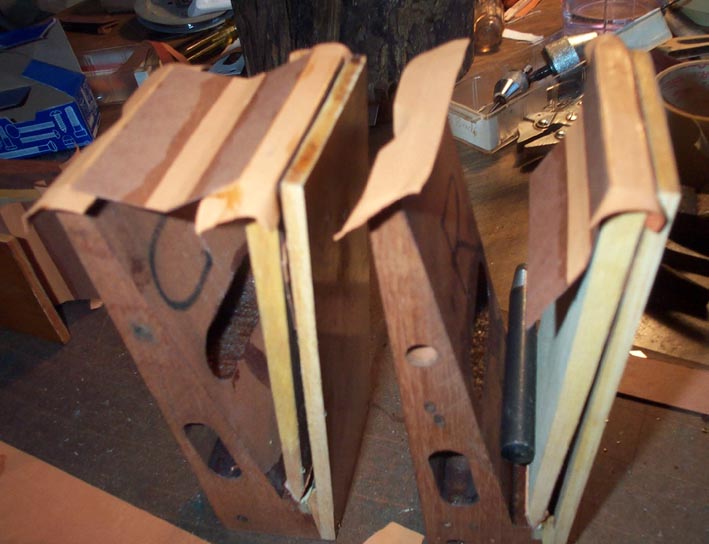
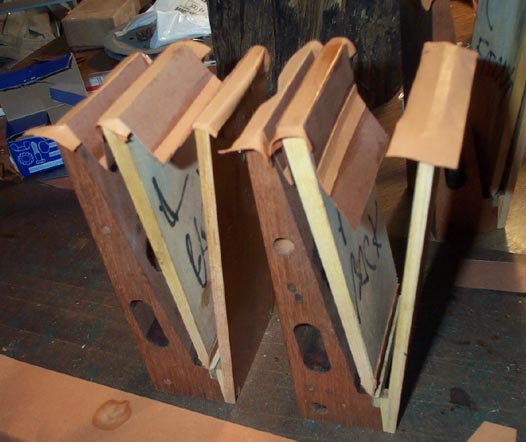
Chapter 9.3 Recovering The Roll Motor
The roll motor pneumatics are covered with pouch
leather all around. Even though these pneumatics are pressurized
from the outside, the end is gusseted with red pressboard. This establishes
the orientation of the corner folds, and sets the gap; since the boards
are confined, the pneumatic can not open all the way to stretch the cover
across the end in the usual manner. Using an old gusset as
a guide, cut new ones from pressboard from an artist's folio. Glue
them together at the center fold with a strip of pouch leather.
The gussets are first attached to the center board.
A strip of leather is glued to the edge of the center board and trimmed
to a 3/8" wide lap on both sides. It is folded down and the gussets
glued to it in the folded position, even with the edges of the boards.
These folds have the leather on the inside. Similar strips are glued to
the outer boards, and folded down. The glue is applied to the gusset
and the pneumatic is "closed" on it to make the joint.



It is important that the last joint of any stiffened bellows is made with the bellows closed. Otherwise that side of the cover will not be parallel to the board inner faces when the bellows closes, and will hit the board and won't "swing" evenly through its path.
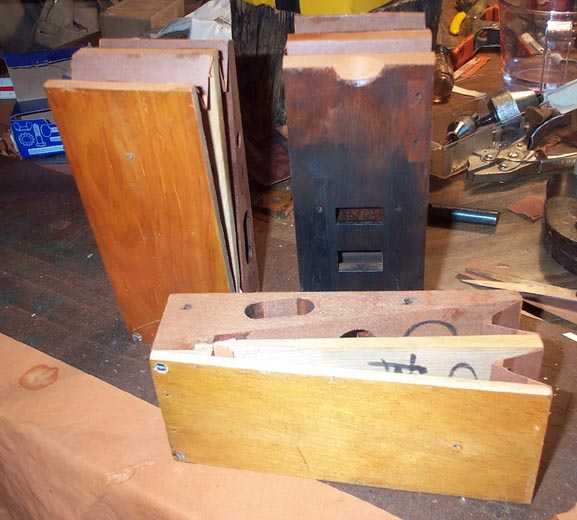
Each side is a huge single piece of pouch leather; it has to be big enough to cover both pneumatics in the pair as if they were open at the same time. Open one side, and mark off its part of the leather. Mark the center board position on the leather, then open the other side and measure its part of the piece from the mark.
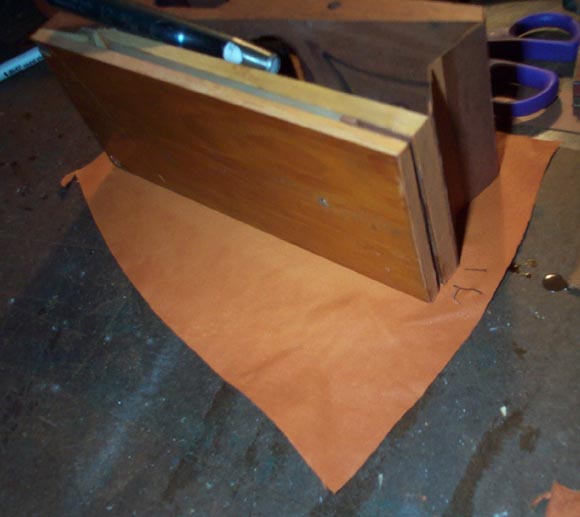
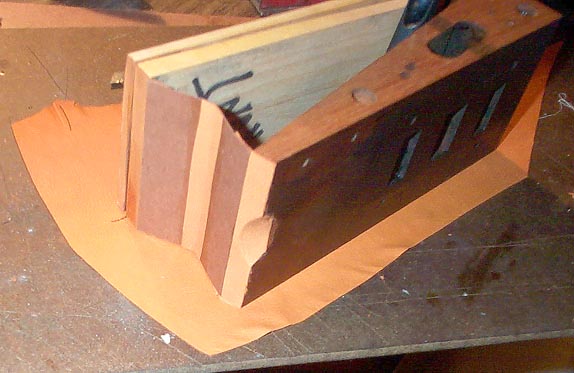
The side covers are glued to the end segments with a quarter inch lap. Glue the leather piece to the front half of the center board only. Then, using a 1/4" strip of wood, trim the leather against one open side, then the other, and finally across the middle.
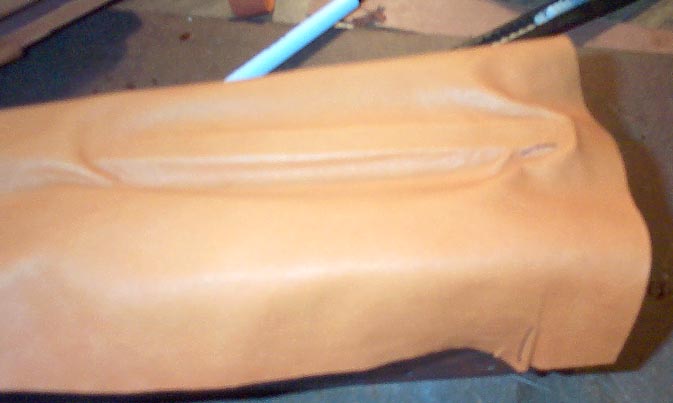
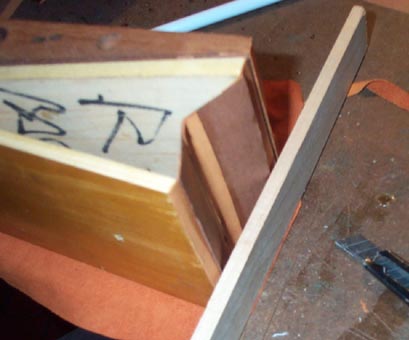
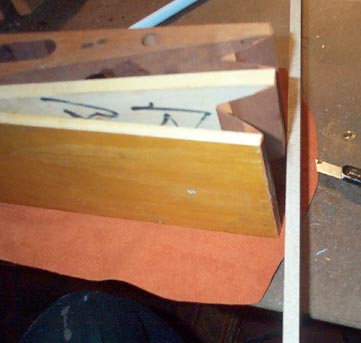
Now carefully glue the quarter inch laps to the edges of the gusseted ends. A little stretching of the edge of the pouch leather may be needed. It is important to glue the laps only 1/4" over the ends, to leave the side pieces "fat". While the glue is still soft, check that pneumatic folds up correctly, with the free corner of the fold not protruding too far beyond the edges of the boards; the fold should not hit the adjacent pneumatic set when the motor is assembled.
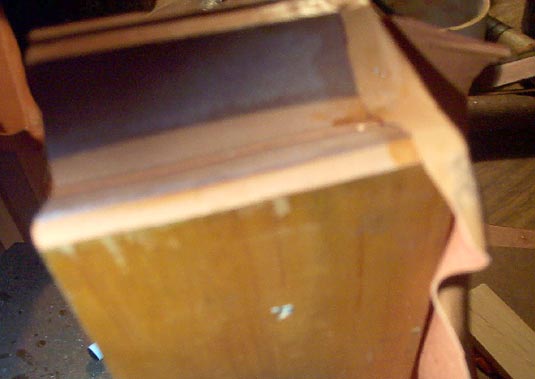
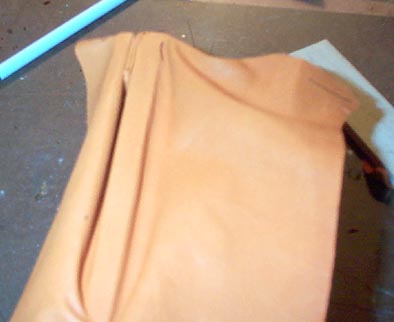
Using a small brush, glue the leather on the boards, working towards the hinge end a little at a time. It is important to keep pushing the leather into the gap to keep the same relative "dip" in the side as is at the fold end. Don't stretch the leather flat across the gap. When the hinge line is approached, make very sure that the leather is snugly glued to the edge of the hinge leather and canvas, especially at the point where the hinge folds. Otherwise there will be a leak between the front and back pneumatic. Even the latest cloth covered Aeolian double acting motors use pouch leather at this point; it is the only thing that will stay stuck to such a small point and still flex freely.
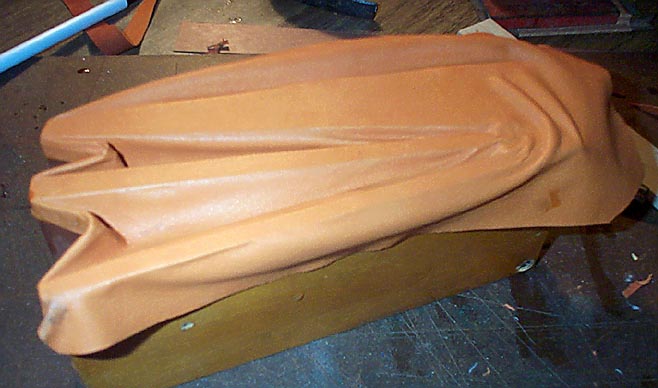
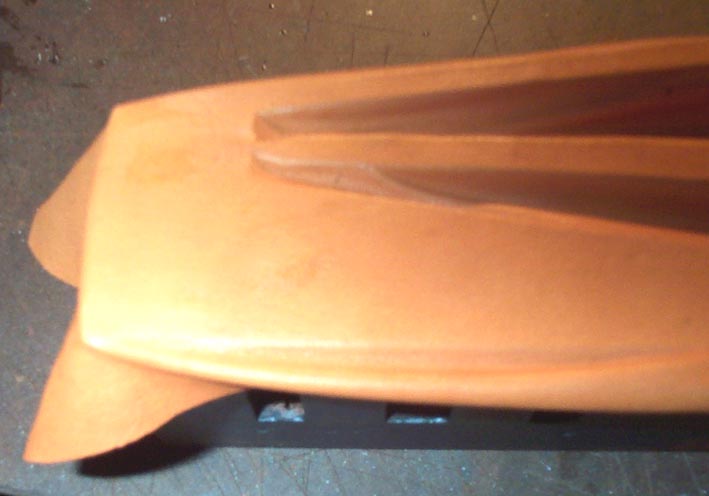
Trim the end lap to 1/2", and glue it on. A scrap of pouch leather (you will have plenty of that) is glued over the whole bottom. Even though there is no hinge here, this piece finally seals the assembly joint and the end grain of the mahogany main block. After the whole thing is dry and trimmed, tape over the normal openings in each pneumatic for test. Except for the screw hole on the back, the only opening should be the pneumatics' valve port in the front. With the openings taped, each pneumatic is tested by trying to move the the center board. Unlike a cloth covered motor, which should test rock-hard in this mode, the board will move slowly, because such a large area of pouch leather is porous. Sneaky leaks, especially through the porous mahogany to the exhaust passage and the assembly screw borings, can be detected with an ear tube or wet finger, and gooped up.
